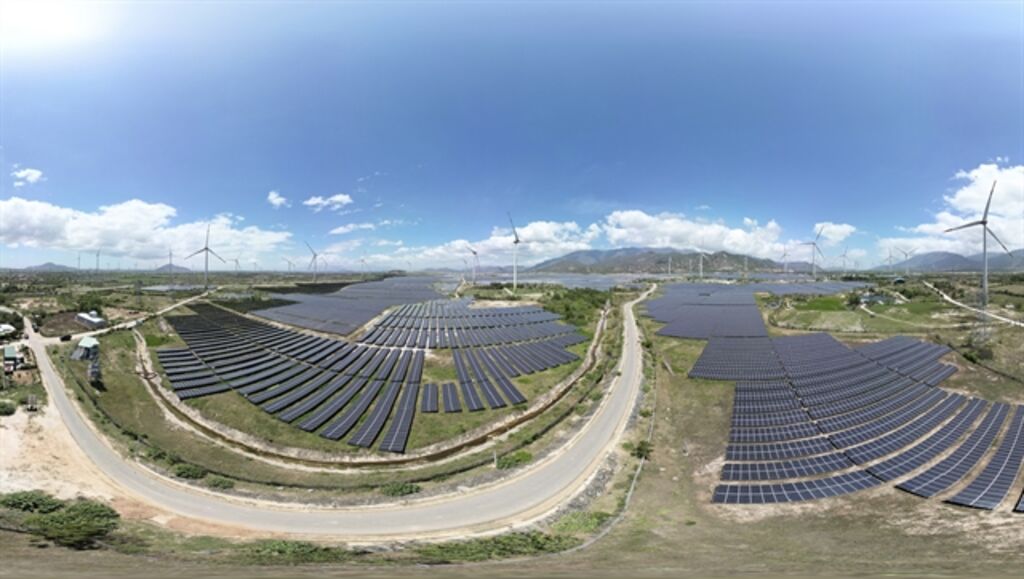 |
| Solar and wind power farms in Khanh Hoa Province__Photo: VNA |
Vietnam is powering up its long-term growth strategy with a bold new energy resolution.
Party General Secretary To Lam has signed a Politburo resolution on national energy security through 2030 with a vision to 2045, pledging stable supply, lower emissions and a shift towards nuclear power to fuel rapid and sustainable development.
Resolution 70-NQ/TW, dated August 20, underscores the critical role of energy in national security and economic progress, stating that 'energy must go first' to support Vietnam’s socio-economic growth over the next decade.
While noting the stable energy supply since 2020, the resolution addresses the risk of shortages amid projected double-digit economic growth. It also highlights key weaknesses in the sector, including regulatory shortcomings, slow project implementation, import dependency, outdated and inconsistent infrastructure, low productivity and the absence of a fully competitive power market with market-based electricity tariffs.
The resolution has outlined a new roadmap towards ensuring national energy security with stable, sufficient and high-quality supply, reducing emissions, promoting energy transition together with the development of a competitive, transparent and efficient energy market and increasing energy efficiency.
Specifically, Vietnam aims by 2030 to ensure a secure energy supply with a total primary energy of 150-170 million tons of oil equivalent and installed power capacity of 183-236 GW, generating around 560-624 billion kWh.
Renewable energy is set to make up 25-30 percent of the total supply while greenhouse gas emissions are cut by 15-35 percent compared with a business-as-usual scenario.
Vietnam also aims to build a smarter, more efficient power system, targeting electricity reliability and access among the top three in ASEAN. The country also plans for its refineries to meet at least 70 percent of domestic fuel demand.
By 2045, the country targets a fully modern, competitive and sustainable energy sector with infrastructure connected regionally and globally.
To achieve the goal, key solutions are raised, including improving the regulatory framework, developing energy infrastructure including power sources from renewable to nuclear and gas while phasing down coal, promoting digitalization, strengthening energy saving and environmental protection while boosting international cooperation.
Of note, private sector investment will be encouraged into the energy sector alongside a leading role for State-owned enterprises.
The resolution also pushes the implementation of nuclear power projects Ninh Thuan 1 and Ninh Thuan 2 to put them into operation in the 2030-35 period.
Vietnam will develop a nuclear power program with flexible scales and small modular reactors while stepping up investment in atomic energy research and technology to gradually master nuclear power toward the adoption of advanced technologies suited to the country’s conditions.
The resolution encourages both State-owned and private enterprises to participate in the development of small modular nuclear reactors.- (VNS/VLLF)









